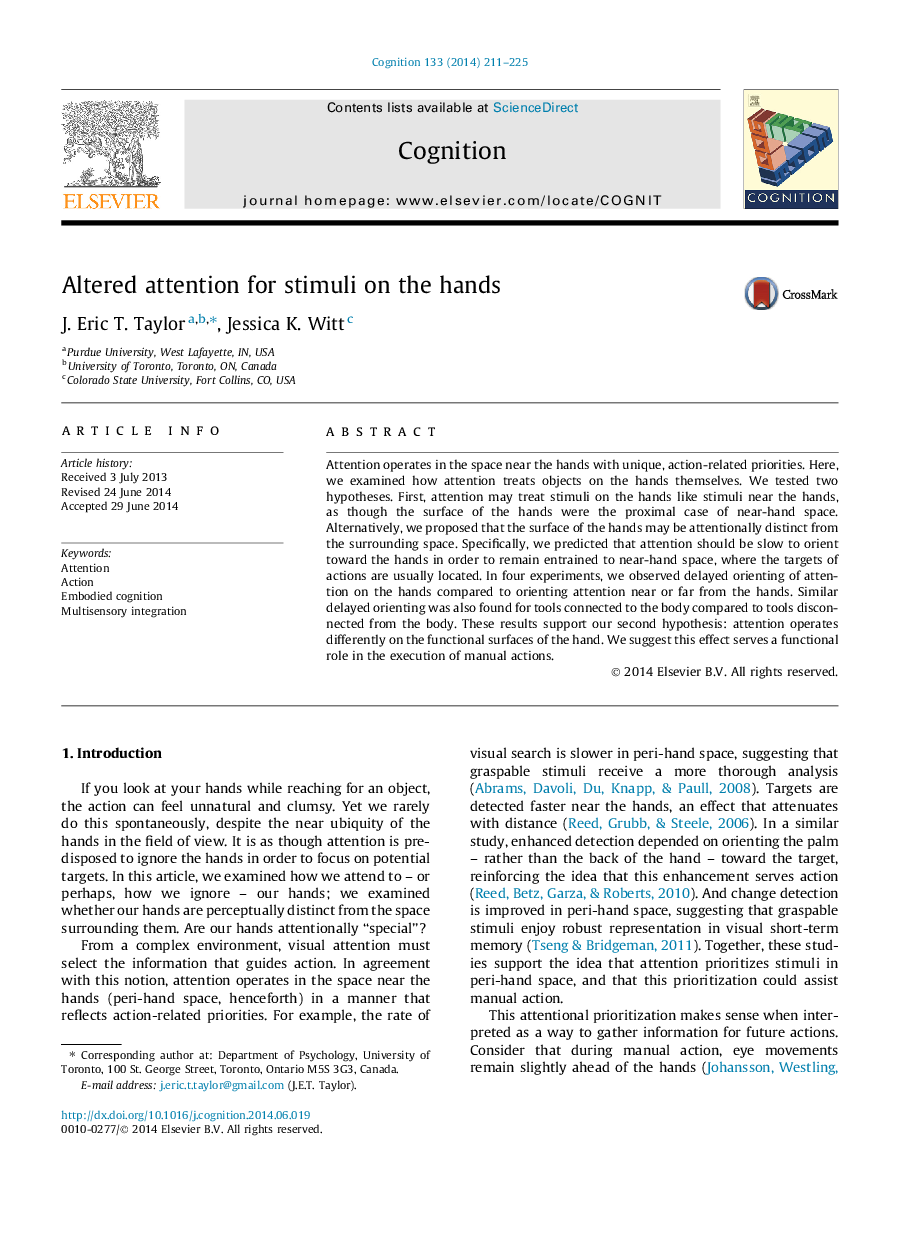| Article ID | Journal | Published Year | Pages | File Type |
|---|---|---|---|---|
| 10457734 | Cognition | 2014 | 15 Pages |
Abstract
Attention operates in the space near the hands with unique, action-related priorities. Here, we examined how attention treats objects on the hands themselves. We tested two hypotheses. First, attention may treat stimuli on the hands like stimuli near the hands, as though the surface of the hands were the proximal case of near-hand space. Alternatively, we proposed that the surface of the hands may be attentionally distinct from the surrounding space. Specifically, we predicted that attention should be slow to orient toward the hands in order to remain entrained to near-hand space, where the targets of actions are usually located. In four experiments, we observed delayed orienting of attention on the hands compared to orienting attention near or far from the hands. Similar delayed orienting was also found for tools connected to the body compared to tools disconnected from the body. These results support our second hypothesis: attention operates differently on the functional surfaces of the hand. We suggest this effect serves a functional role in the execution of manual actions.
Related Topics
Life Sciences
Neuroscience
Cognitive Neuroscience
Authors
J. Eric T. Taylor, Jessica K. Witt,
